CrossCode
- Buy this game on Steam
- Buy this game on itch.io
- Try a free demo of this game
- Visit this game's official website (has links to console releases)
- Visit the developer's official website
- Buy this game's soundtrack on Bandcamp
A few years ago, before I really started using Steam, I had a habit of scrolling for hours through games on the Nintendo Switch Eshop on the "Great Deals" page, sometimes even reaching the end of the list. It was from this page that I was able to harvest some of my most niche indie picks. Multiple times throughout this process I passed over a game called CrossCode, which I would always look over but never purchase. I was more risk-averse in those days. Today, if I see a game with a page half as promising as CrossCode's and it costs just $10, I will often just buy it on sight. But because I never did, that the existence of CrossCode was a fairly constant presence somewhere in the back of my mind. Then in 2022, itch.io offered the Bundle for Ukraine, and I finally ran out of excuses not to play CrossCode.

So, over the course of about a week, mostly during very late nights in my college dorm in spring of 2022, I binged the entire game. My opinions on the game are most poignantly expressed by example. After I finished the game, I bought it on Steam at full price just to support the developers, along with the DLC. I also purchased the game four or five times to give as Christmas gifts to my friends, prompting several of them to individually purchase the DLC themselves.
In other words, it's extremely good. CrossCode is one of my easiest recommendations to just about anyone, familiar with the genre or not. Get ready for me to say this exact thing, rephrased in different contexts, dozens of times in this review.
To start off this review, I want to make a point to acknowledge the most novel aspect of CrossCode, the one aspect of the game that I have never seen done by any other game. This is technically a spoiler, but you will learn it 45 minutes into the game before even entering the tutorial dungeon. CrossCode employs a unique embedded narrative. CrossCode is set almost entirely inside of the fictional MMORPG CrossWorlds. This has massive consequences for basically every aspect of the game. Characterization, plot points, worldbuilding, game mechanics, world design. All of these elements require multiple levels of analysis: one for CrossCode and one for CrossWorlds.
As an example, while playing CrossCode, you experience most of the plot of CrossWorlds; however, the plot of these games are not the same, not nearly. CrossWorlds has a fairly standard plot for an action game, with the traditional concessions required for the plot to make sense in the context of an MMORPG. It mostly tries to get out of the players' way, introducing the lore of the world and providing the environments, which allows players to create their own personalized adventure within the confines of the game world. CrossCode's plot, on the other hand, is a much more thematically rich narrative about a group of players who join up to play CrossWorlds and form a gripping friendship in the process.
The developers of CrossCode are keenly aware of the gap here, with much of the writing poking gentle fun at this fact, allowing the developers to lightheartedly criticize certain RPG tropes while sincerely indulging in others in a very believable fashion. For example, since some characters in CrossCode are real people who exist outside of CrossWorlds, there are a few pretty good jokes about the way that they (as real people) are so much more sophisticated than CrossWorlds' NPCs, despite all of them being NPCs within the context of CrossCode.
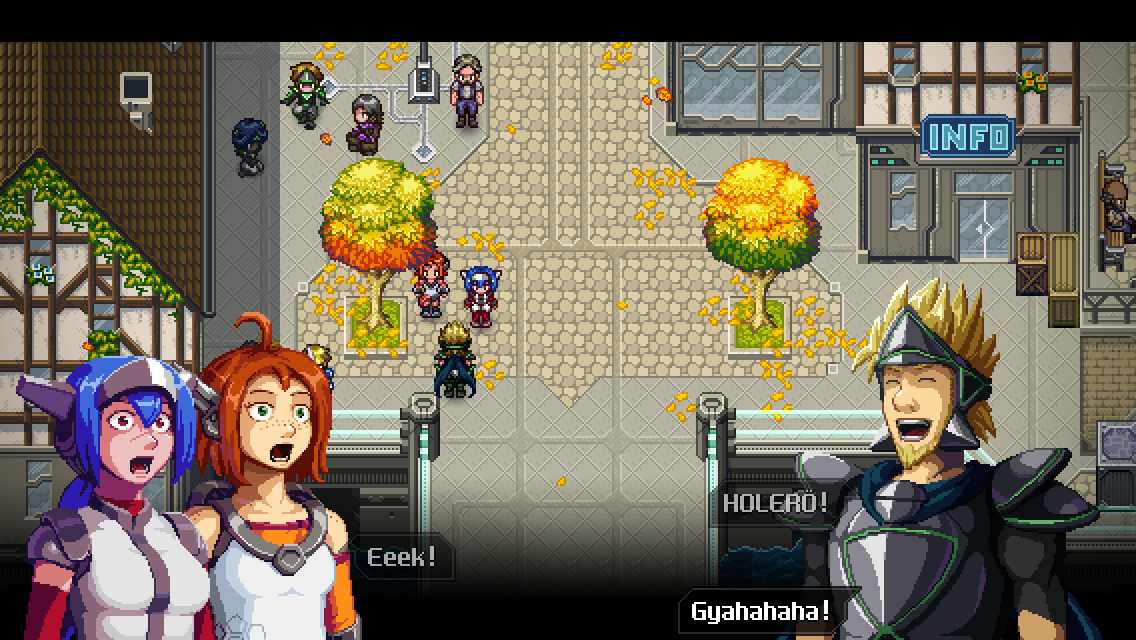
I would say that, simply for this aspect of its writing, CrossCode is one of the most fascinating games to analyze as a work of art. And, because of this choice, CrossCode is able to craft a truly unique narrative about friendship, forgiveness, love, and loss.
But, I don't want to spoil anything. To experience this game knowing too much about where it goes would be nothing less than a tragedy. If this last section piqued your interest enough, you might even consider clicking off here and just playing the game yourself.
But, you might still want to stay and learn a bit more about the rest of the game.
Okay, so what kind of game is CrossCode, actually? Well, it's a 16-bit, top-down Action RPG. The stylistic inspirations from the Zelda series are extremely obvious in the best way possible. The dungeons and world maps in CrossCode are a true love letter to all the best elements of design in the Zelda series. They serve up all the complexity of the sprawling designs that characterize the top-down games with all the spectacle and cinematic appeal that give richness to the 3D games.
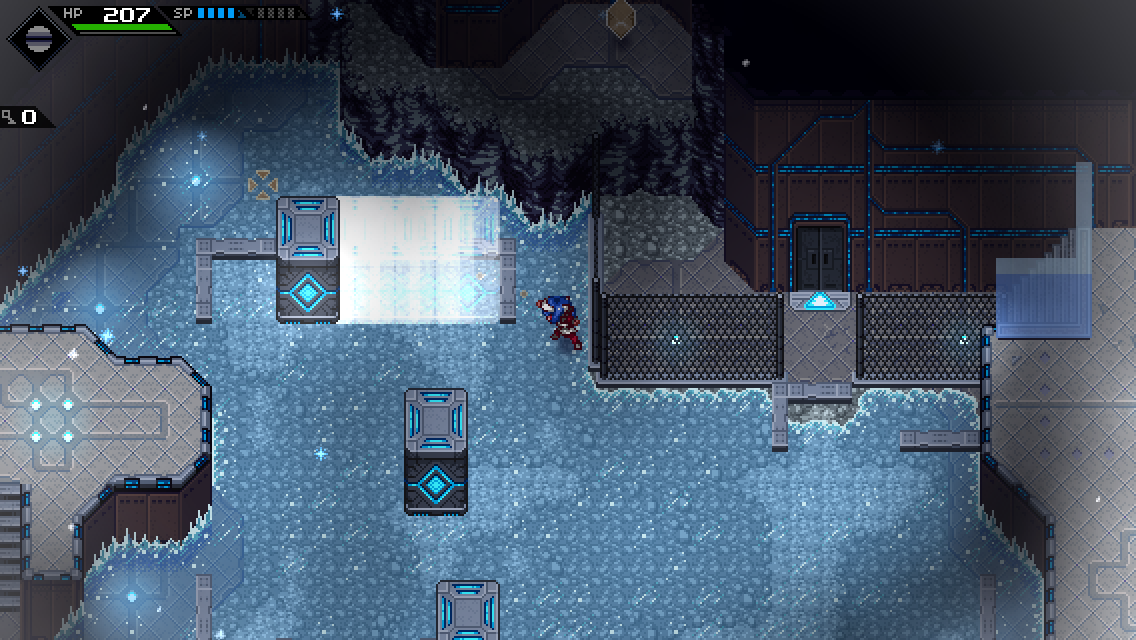
The puzzles in particular feel like a fairly sizeable step up from many Zelda puzzles. The puzzle elements on display in CrossCode, especially those in the later dungeons, are both more interesting and more reactive to stimula than those in most Zelda games; plus, each dungeon has more and harder puzzles than the average Zelda dungeon.
The most notable addition, though, has got to be how much more of an active role the player has to take to complete the puzzles. In most dungeon crawlers, just knowing how to get the puzzle elements into the right place is 90% of the effort. In CrossCode, this number lowers to about 50% for many puzzles. Oftentimes, you are required to move the puzzle elements into their correct places, then initiate the puzzle, then make adjustments to the puzzle elements on a timer while the puzzle is completing. I have taken to calling these execution-based puzzles. I absolutely adore them, but I have heard mixed reviews from a lot of other players. There is an assist mode, which can turn down the speed of these execution-based puzzles, but there are some who opine that even their inclusion hampers their enjoyment of the game.
CrossCode also differs from Zelda in that there are not Zelda-style items in the traditional sense. In each dungeon, you receive an element, which acts as a modifier to your weapons. These serve a combat purpose as well as a puzzle-solving purpose, which is neat, but because each element is used in exactly the same way as the other elements, some of the enjoyable parts of Zelda-style puzzle solving where you have to find out how each item individually works are heavily diminished. This is not a dealbreaker, not nearly. But I do find myself missing it.
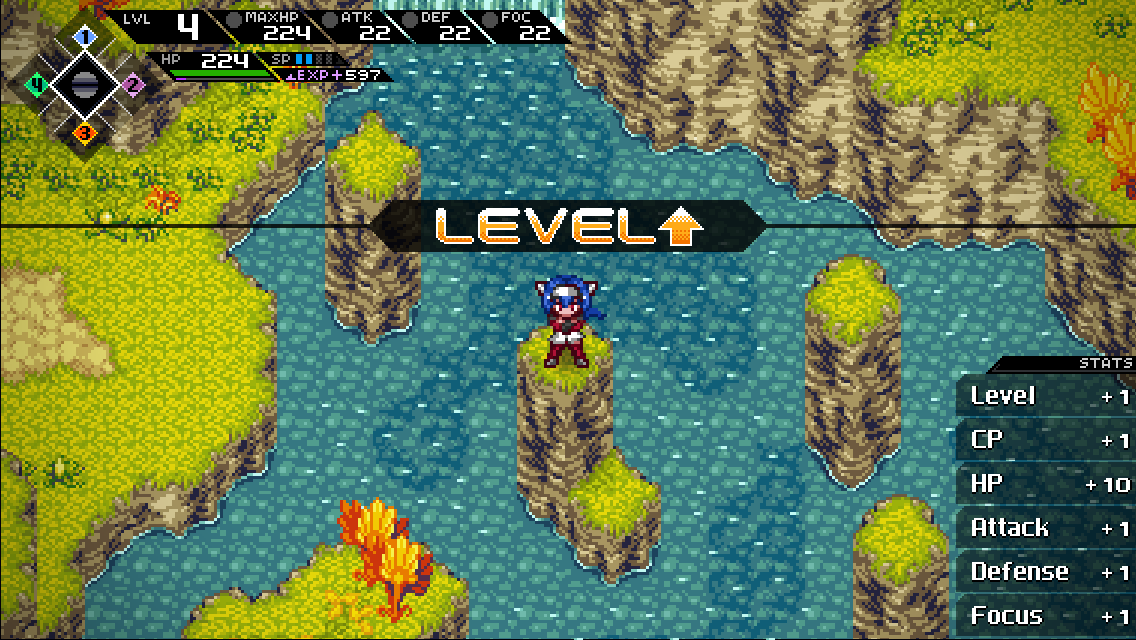
This is not to say that CrossCode is a Zelda clone that just innovates on certain Zelda-like aspects of its formula. To take just one example, there are many more traditional RPG elements present in CrossCode than in any Zelda game. CrossWorlds is an MMORPG, after all. You gain experience which gives you levels that can be used to unlock abilities on a skill tree. There's party management and a quest log full of things to do. These additions carry the benefits and flaws that they have in every other game, and, admittedly, their integration into the gameplay loop is not all that inspired. However, they serve their purpose. Not every game needs to innovate on everything that makes RPGs unique (though that can be fun).
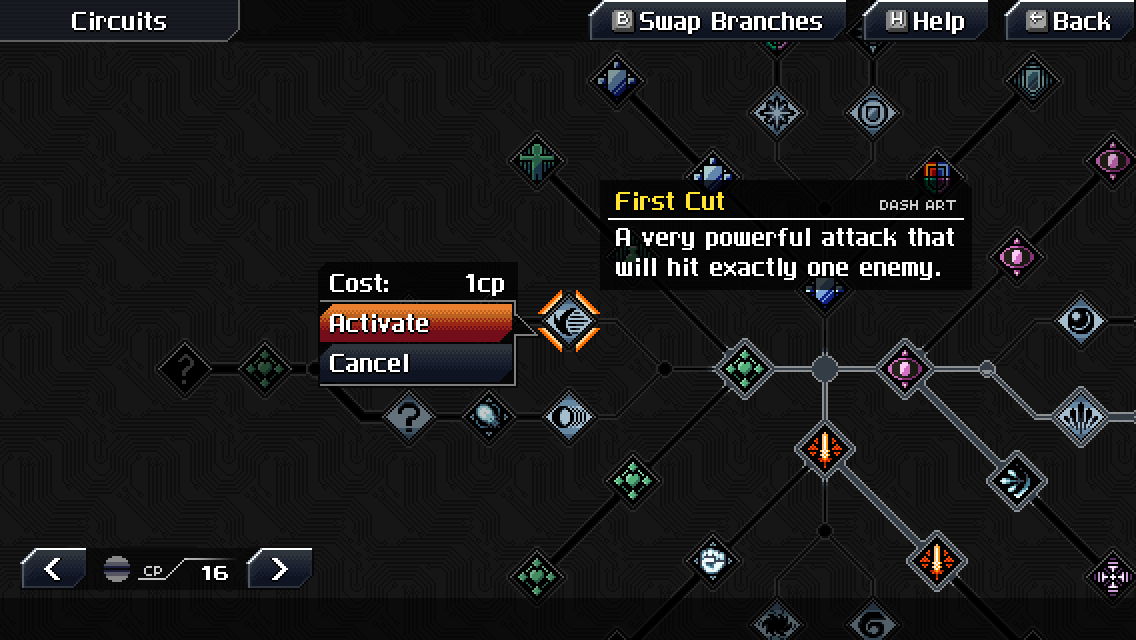
Another way that CrossCode sets itself apart from its inspirations is in the combat system, which is primarily based in the tradition of twin-stick shooters. Take aim at enemies from far away or slash them at close range. Switch between the four different elements, which are, of course, Heat, Cold, Shock, and Wave.
The addition of elemental combat introduces a swath of interesting mechanics that serve to make combat extremely dynamic. Each element has its own skill tree containing three levels of unlockable special moves. Neutral (the lack of any element) also has a skill tree but with only two levels of moves. Also, all of your stats go up when switching out of neutral. So you'll want to spend as much time as possible in one of the elemental modes. However, it is a balancing act because attacking in an elemental mode builds up an "elemental overload" charge, which forces you into neutral if it overflows. This charge dissipates over time so long as you don't attack, but it discharges faster in neutral mode.
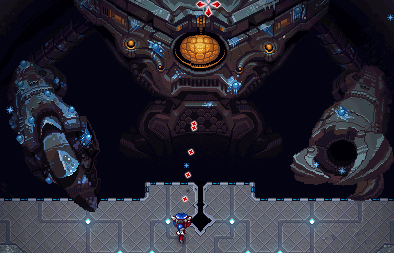
Elements come in pairs. Heat opposes Cold and Shock opposes Wave and vice-versa. You'll land the most damage against a Cold-type enemy using Heat-based attacks, but you'll also receive more damage yourself if they manage to hit you. If, however, you switch to heat during a window where the enemy has the advantage, you'll take much less damage from their attacks. Then, when they are more vulnerable, you can swap to Cold to deal damage. Interactions like this are what make CrossCode combat so interesting compared to many other games. However, I'll leave most of the intricacies of combat for you to discover on your own, dear reader.
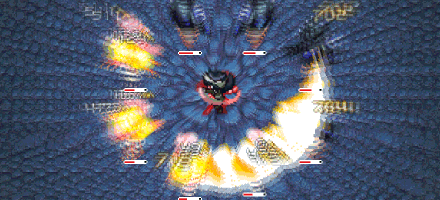
But before moving on, I would like to make one final note about the combat system. In my first playthrough of CrossCode, I never had to intentionally grind up to the level required to beat a boss, though there are some situations where I had to grind to get trading materials for the sake of a questline. CrossCode has one of the most effective solutions to the problem of tedious grinding that I have ever seen, in the form of combat ranks. When you begin fighting an enemy, you enter combat rank D and defeating more enemies increases your rank. After all the enemies that you have been fighting are defeated, there is a short timer during which you must find more enemies to defeat lest you lose your combat rank.
This is undeniably fun and it gives you a reason to push your luck during combat. Some drops don't appear unless you are higher than a certain rank, and your chances of getting high-quality drops increases as your rank does, potentially shortening grinding times further, rewarding skilled play. Plus, if you are able to last long enough, you achieve the fabled S Rank and are treated to one of the most hype songs in the game and double drop rates.
Any discussion of CrossCode is incomplete without a mention of its soundtrack. Nagi Shirakumo (née Deniz Akbulut) should be on your list of game composers to watch. Every track in this game hits powerfully with its accompanying scene and the inspirations are as varied as the game's environments, although the jazz fusion-inspired tracks have to be my favorite. The loud, exciting, synthy battle themes are some of the most instantly memorable songs in video game history, propelling you to keep the combat going (if nothing else just so that you can hear the incredible S-rank theme). Then, when you do fall out of combat, you're treated to the atmospheric area themes, which range from pleasant to intriguing to downright oppressive in places. The final boss theme is a glorious five-minute composition featuring repeated time signature changes and it is one of the most complex pieces of music I've listened to in a video game.
Now, I would not say that I am in love with the visual style of CrossCode. However, I find this particular type of 16-bit artstyle, pseudo-SNES but souped up, not entirely respecting pixel boundaries, to be oversaturated. In fact, the artstyle largely being nothing new is one of the reasons I did not buy this game back when I discovered it on the Switch eShop. Don't get me wrong, it looks great when in motion, oftentimes stunning, and the animation work is top-notch. I'd say it is a stellar execution of a style that I've already seen quite a few times.
But, on the less nitpicky side, the artstyle is also is to blame for possibly the biggest issue in the game: depth perception. CrossCode runs in a 3D physics engine, but all rendering is done in 2D. This can make it difficult to navigate the highly vertical maps, which can consist of up to three layers. It is common that two cliffs appear to be at the same height on a cursory glance, but are actually an entire level apart from each other. And the game does expect you to make these jumps between cliffs. Fortunately, most sections where this is an issue are entirely optional, only leading to chests that contain consumables or trading items, but I can imagine this being especially onerous for a completionist type.
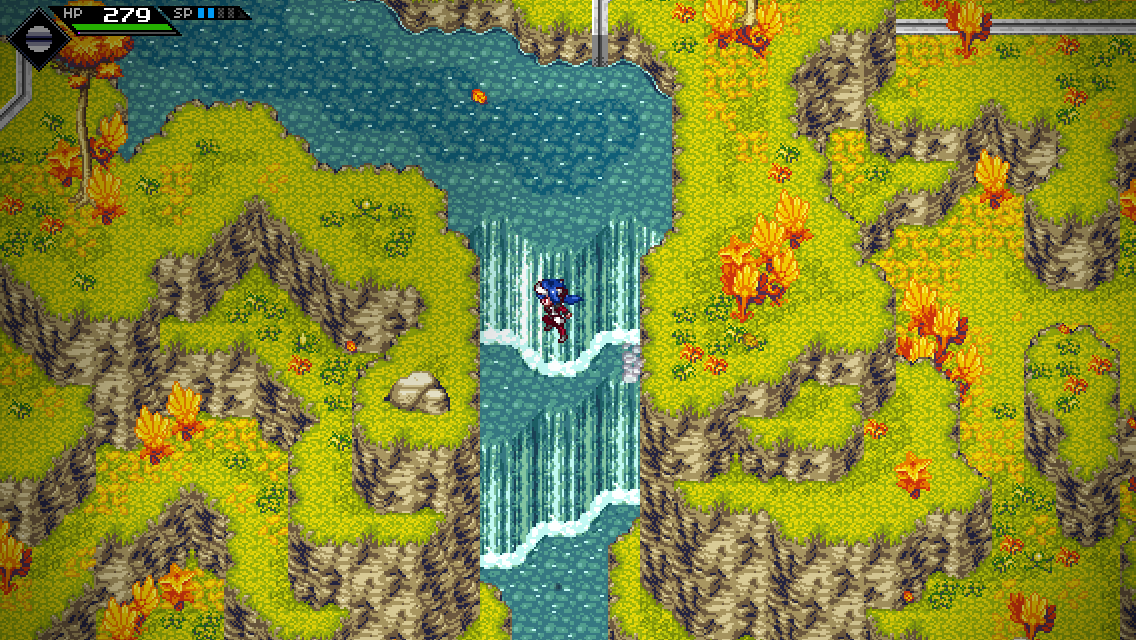
CrossCode is well worth the $20 price tag, but it does go on sale pretty frequently (basically at every major Steam sale). At any discounted price, CrossCode is an honest no-brainer.
But there's also one major paid content expansion: the A New Home DLC, which functions as a short sequel story, providing some much-appreciated closure on a lot of the elements of the main game that may not have gotten the sendoff that they deserved. This DLC, however, is a bit of a mixed bag among even fans of the game.
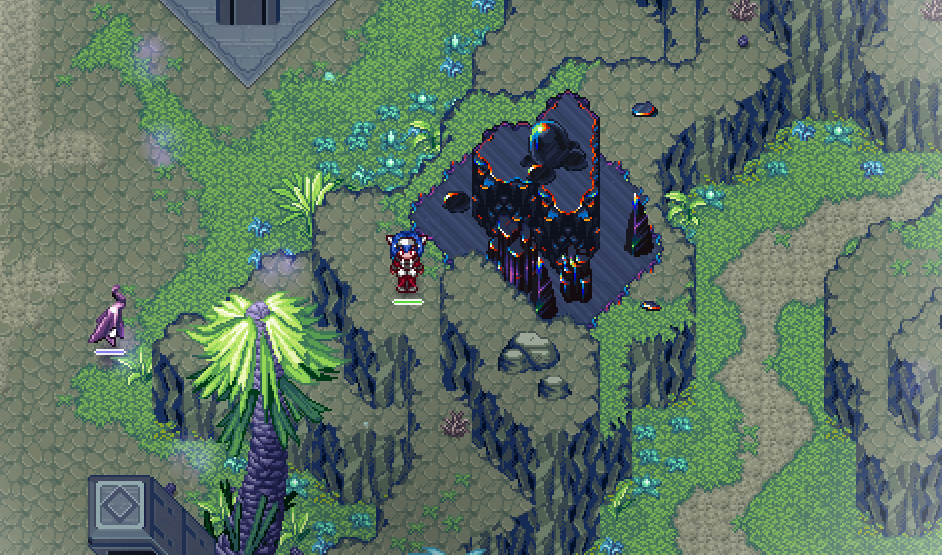
The DLC dungeon and the boss fight at the end are unambiguously the best by a fair margin. It simply blows everything else out of the water. I have a hard time imagining a world where almost any other game developer makes anything even approaching the multiple-hour behemoth of puzzle solving and combat encounters capped off with an incredibly tough but rewarding boss fight that is Ku'lero Temple. The musical themes for the DLC area, dungeon, and boss are not by Deniz Akbulut, but they are also top-tier songs, and a good reason why はがね/Steel Plus should also be on your list of game composers to watch.
The enemies in the DLC are mostly reskins of old enemies, with only a few exceptions, and the new overworld area is somewhat small in comparison to the others. Some players did not like the actual, final conclusion of the game, which occurs in the final chapter after the DLC dungeon is completed. I thought the boss fight in this area was middling, but I liked the story developments that it enabled, and I thought it provided a compelling explanation for one element that I wanted answers on.
The DLC is perhaps a bit steep at its standard retail price of $7, depending on how much you enjoyed the base game, but it also goes on sale quite often and it, too, becomes well worth it at its discounted price point.
But this is not the end of the review. Radical Fish Games is currently working on their second ARPG, similar to CrossCode in many ways but also excitingly unique and fresh, in the form of Alabaster Dawn and it is currently one of my most anticipated games of all time. It seems to fix basically everything that I found myself frustrated by in CrossCode. Its hybrid 3D artstyle should render depth-perception issues a thing of the past. Deep elemental combat returns but with varied weapons which have already proven to have unique functions in puzzle solving. And the developers have promised that the puzzle solving will pull back on some of the more controversial decisions that made them divisive without sacrificing any complexity. Pull up a chair and read the development blog posts. I hope you find them just as exciting as I do.
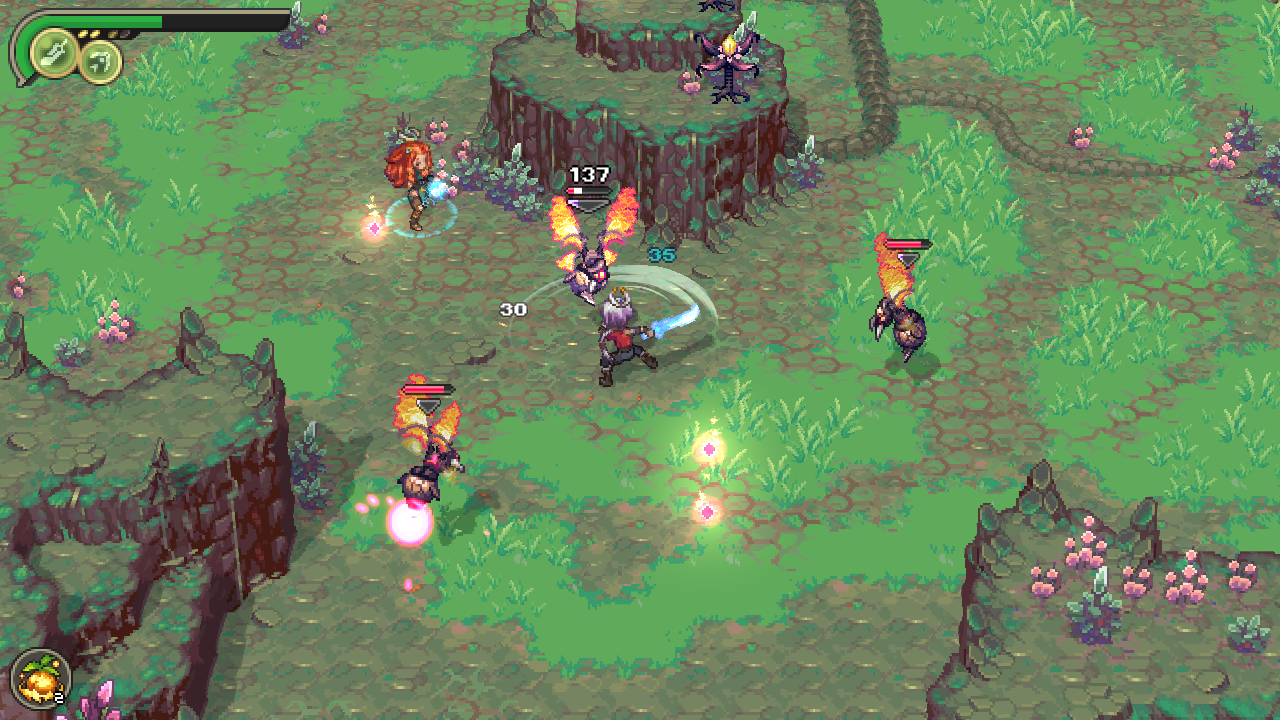
CrossCode might never be recognized alongside Hollow Knight or Celeste as a big dog of indie gaming like I think it should, but if we get enough attention on Alabaster Dawn, it just might have a shot. So there's your call to action. Buy CrossCode and wishlist Alabaster Dawn.
